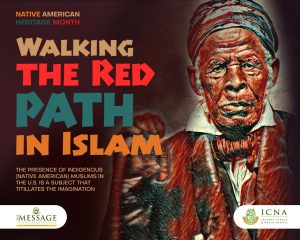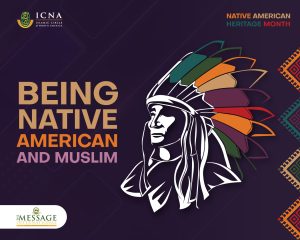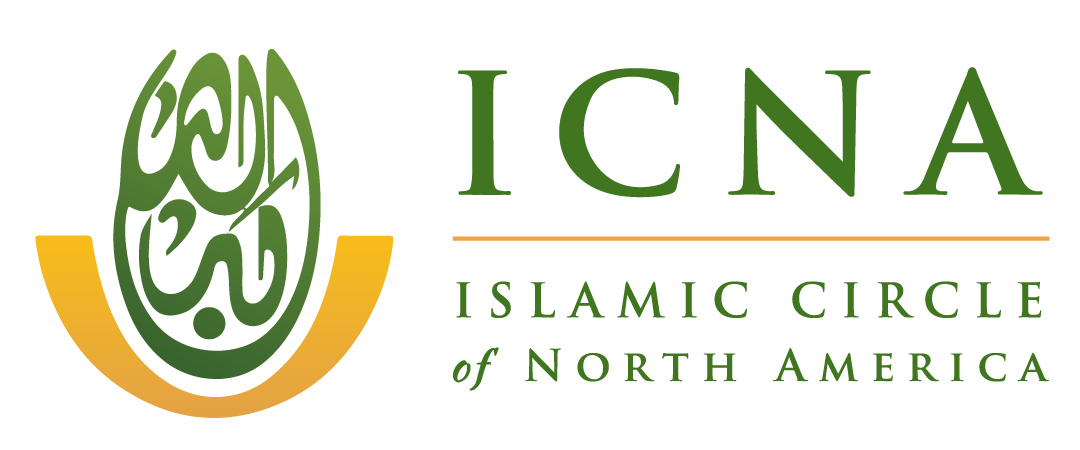
Walking the Red Path in Islam
Anthropologists and archaeologists are generally unified in their view that Native Americans (Red Indians) were the original inhabitants of the Western hemisphere. The ancestors of modern-day Native Americans are uniformly heralded as the “First Americans,” whether the hypothesis is that migrants arrived in the Americas when the South American and African continents were physically joined, or that a mass migration came from eastern Asia across the Bering Straits to the southern-most regions of South America. Evidence of Islam among Native Americans during the pre-Columbian period is mostly sketchy as there is relatively little research on the subject. Notable exceptions are the works of a few individuals including Shaykh Abdullah Hakim Quick, Dr. Jerald Dirks, and Kambiz Ghanea Bassiri. Further historical documentation of indigenous people embracing Islam through their interaction with Muslim Malian explorers in the Americas in the early 1300s, as well as the Natives’ synergy with runaway Muslim African slaves in the United States, holds the promise of validating and building upon preliminary research in this recent field of study. While there is abundant historical research about the relationships between Europeans and Native Americans, and Europeans and Africans in America, definitive works about the relationships between Native Americans and Africans in America, from the 15th to the 19th centuries, have yet to be written. Dr. Carter G. Woodson, heralded as the “Father of Black History,” in 1920 referred to the absence of research in this area as, “…one of the longest unwritten chapters in the history of the United States.”
The interaction of Natives and Africans in America is exemplified by a number of well-known historical figures. Crispus Attucks is recognized as the first martyr of the American Revolution. He was fatally shot by British troops during a street fight between American colonists and British soldiers in 1770. Tensions ran high due to the heavy taxes imposed by Britain. The incident became known as the Boston Massacre.

Attucks was a Black Natick (Nantucket) Indian. Similarly, the father of the Back to Africa Movement, Paul Cuffee, was of Black and Indian (Dartmouth) parentage. He was a successful shipowner in Massachusetts, and in 1815 he transported and resettled in Sierra Leone 38 Black freedmen and former enslaved Blacks. Another example, one of the most notable and effective abolitionists of the mid-19th century, was Frederick Douglas, also of mixed Native American and African American ancestry. Following two previous failed attempts at freedom, Douglas escaped from a Baltimore plantation to New York, eventually settling in Massachusetts where he became known as a brilliant orator, author, and compelling abolitionist voice. Continue Reading….
Being Native American and Muslim
I prefer being referred to as Native American. When someone says “Indian,” most people think it refers to a person from India. It’s more accurate to say Native American or Indigenous. My family is from South Dakota and growing up in Oglala in the southwest of the state, you are used to being around Native Americans every day, and everybody is related to you in some way. Both my mother and my father are Lakota (Sioux) Oglala. Being Native American and Muslim is a balancing act that is interesting because you know your heritage yet now you must learn new and different traditions.

Some Muslims told me that you must turn your back on your native culture once you become Muslim. I wasn’t going to do that. Our family’s history goes back to the days of traveling with Crazy Horse, one of the most famous of the Oglala Lakota war chiefs. Both sides of my family fought at Little Big Horn, then they branched out with Red Cloud. We have a proud history that I can never ignore.
My grandparents were very strict in religion. They were Christian. My grandfather knew the Old Testament backward and forward. It was rather difficult growing up with my grandparents because they would not allow certain things in the house. They insisted that Native Americans shouldn’t eat pork. I discovered that Muslims don’t eat pork and do several other things in a similar way as my grandparents. My grandparents and my mom lived in Oglala, South Dakota and my uncle lived in Wolf Point, Montana. We would spend part of the time in South Dakota and the other time in Montana. Growing up in two different states was interesting and fun.
Coming to Islam
I started to do research about Islam in 2005. I wanted to find out about Shariah law and what it meant. I was on a hunt to learn everything I could about Islam. I met online a brother from Egypt and he taught me a lot about the Islamic religion and being Muslim. When I asked him questions that he wasn’t sure about, he would tell me to keep the questions until I go to the mosque to take shahadah (declaration of faith). I eventually took my shahadah in 2007 at the mosque. Continue Reading….


